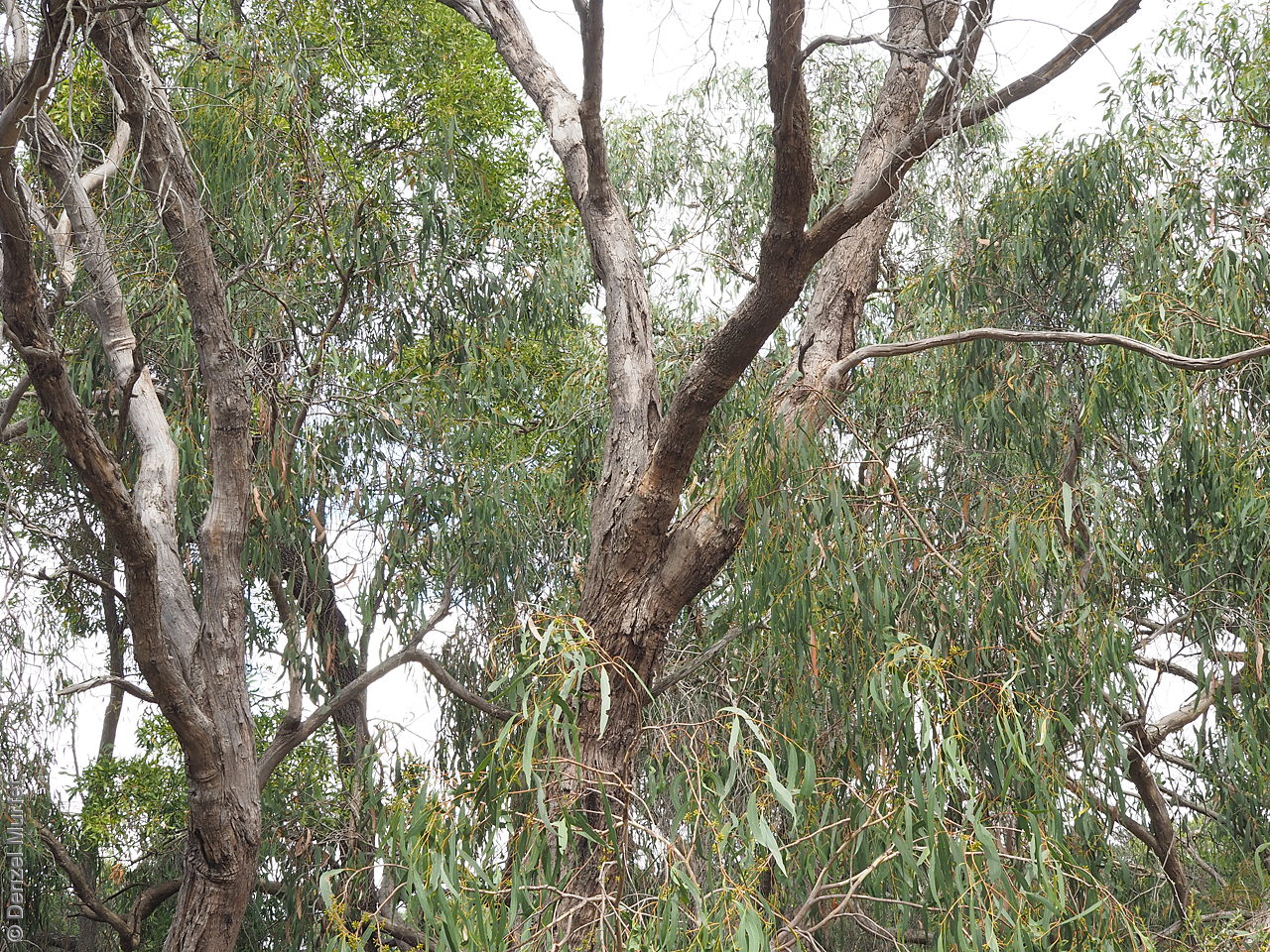

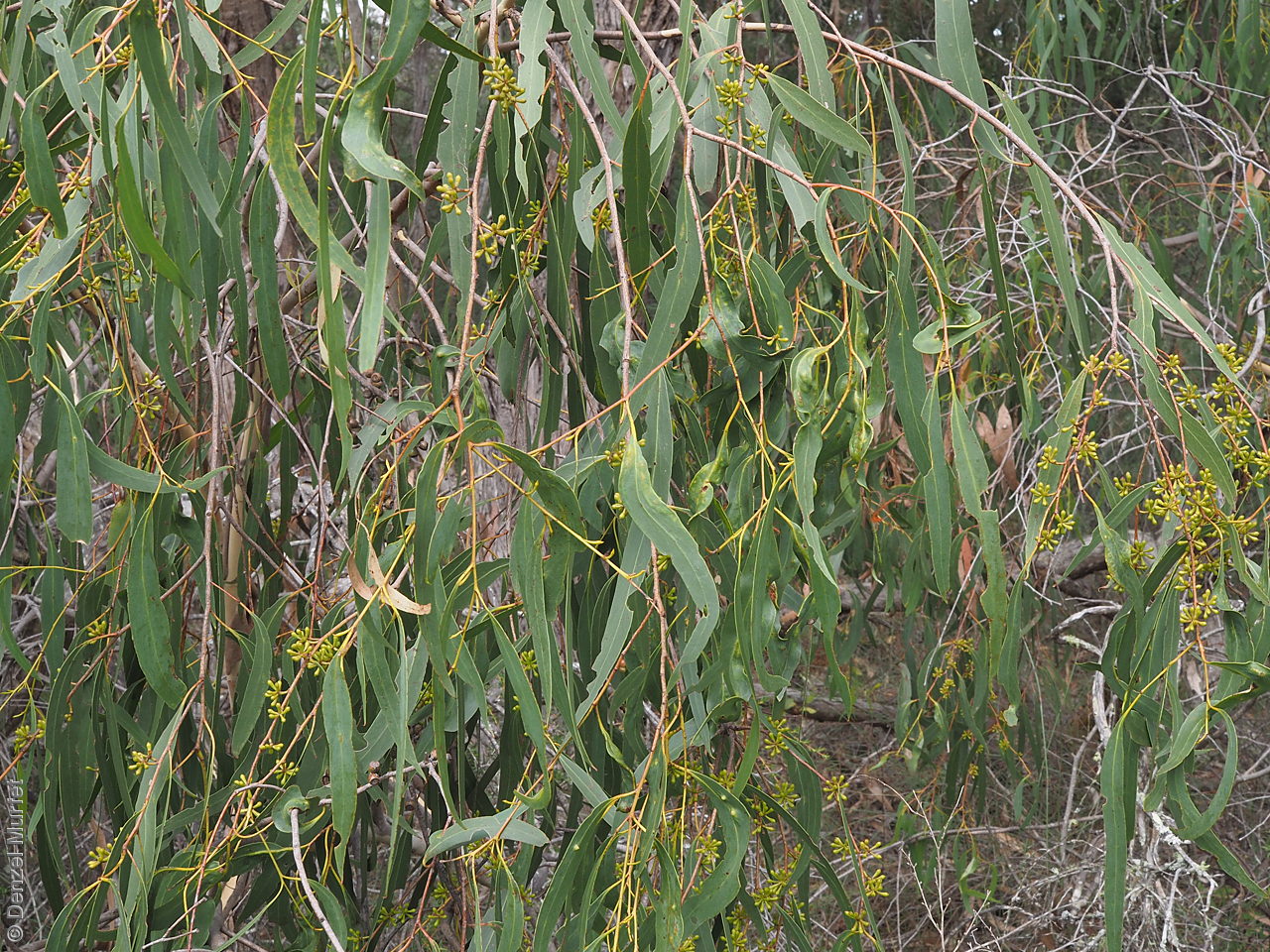
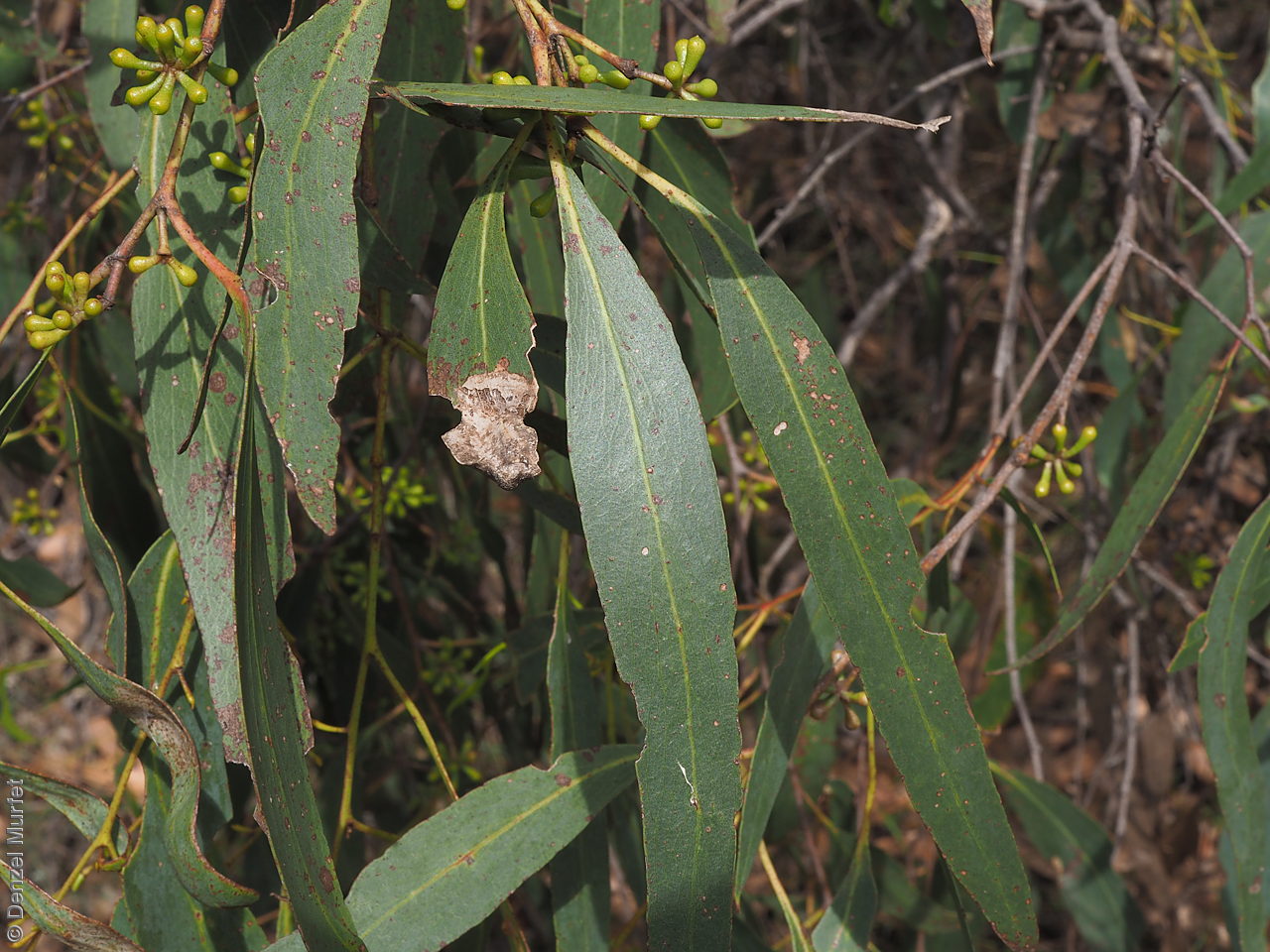
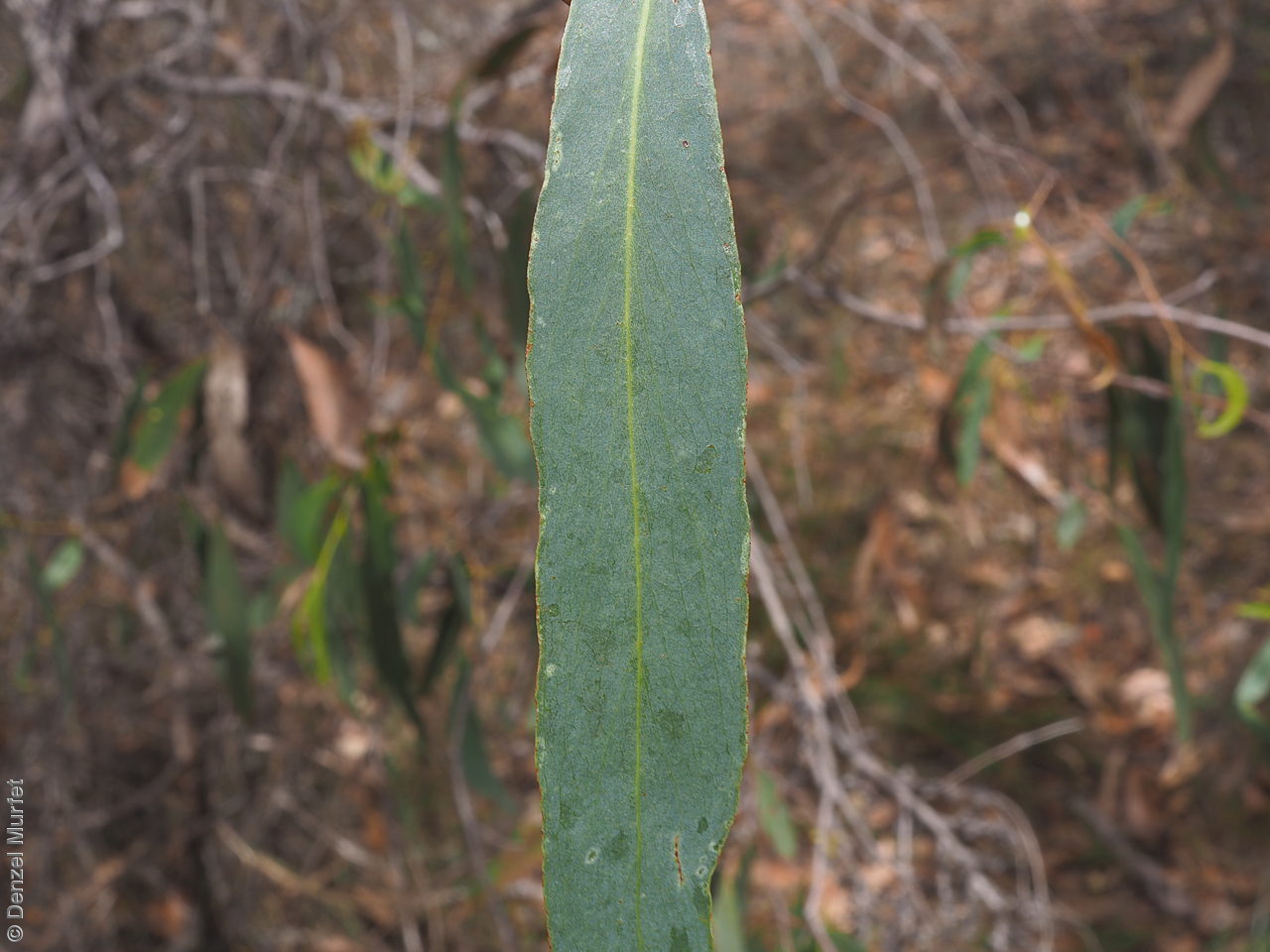
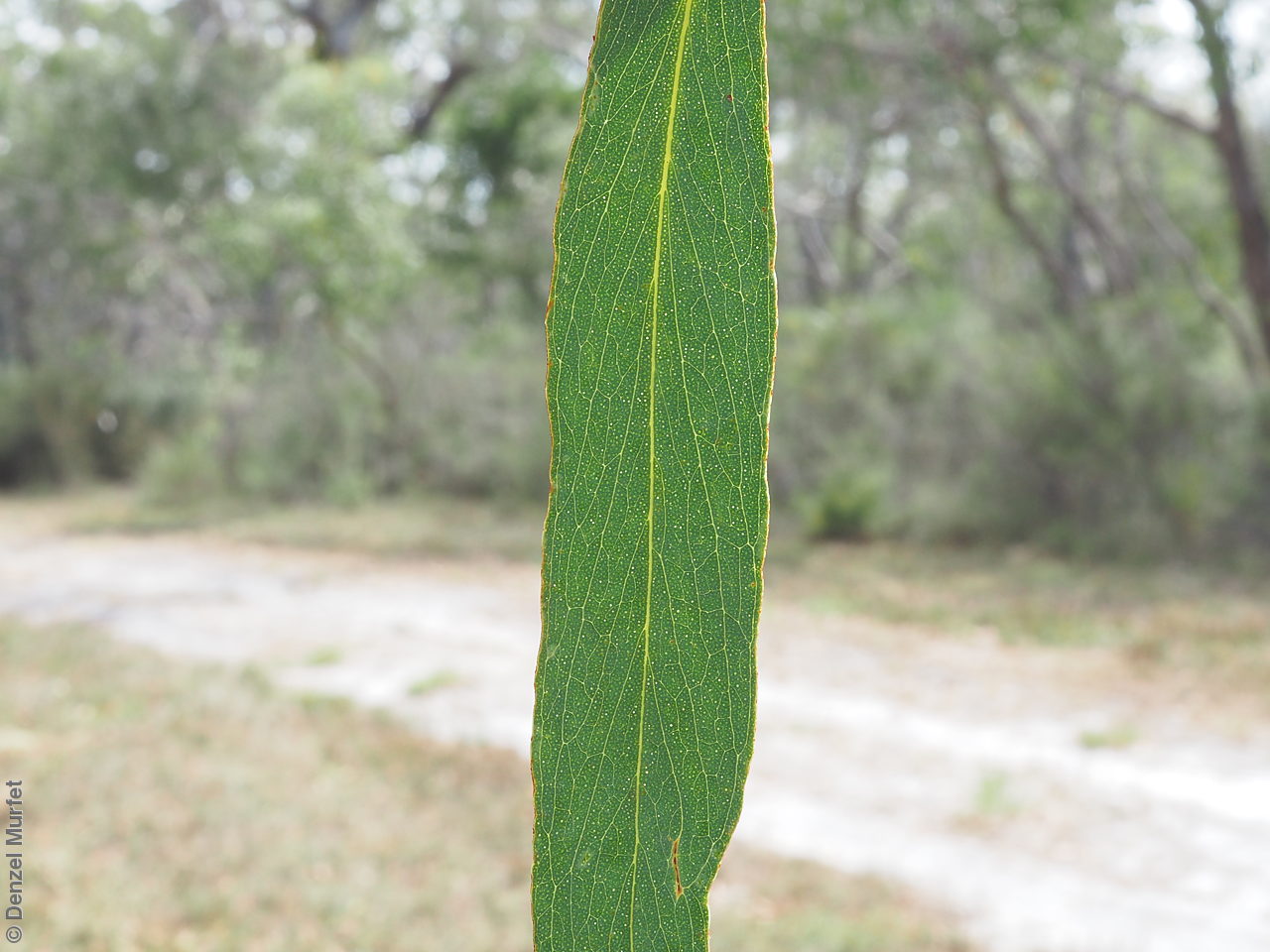
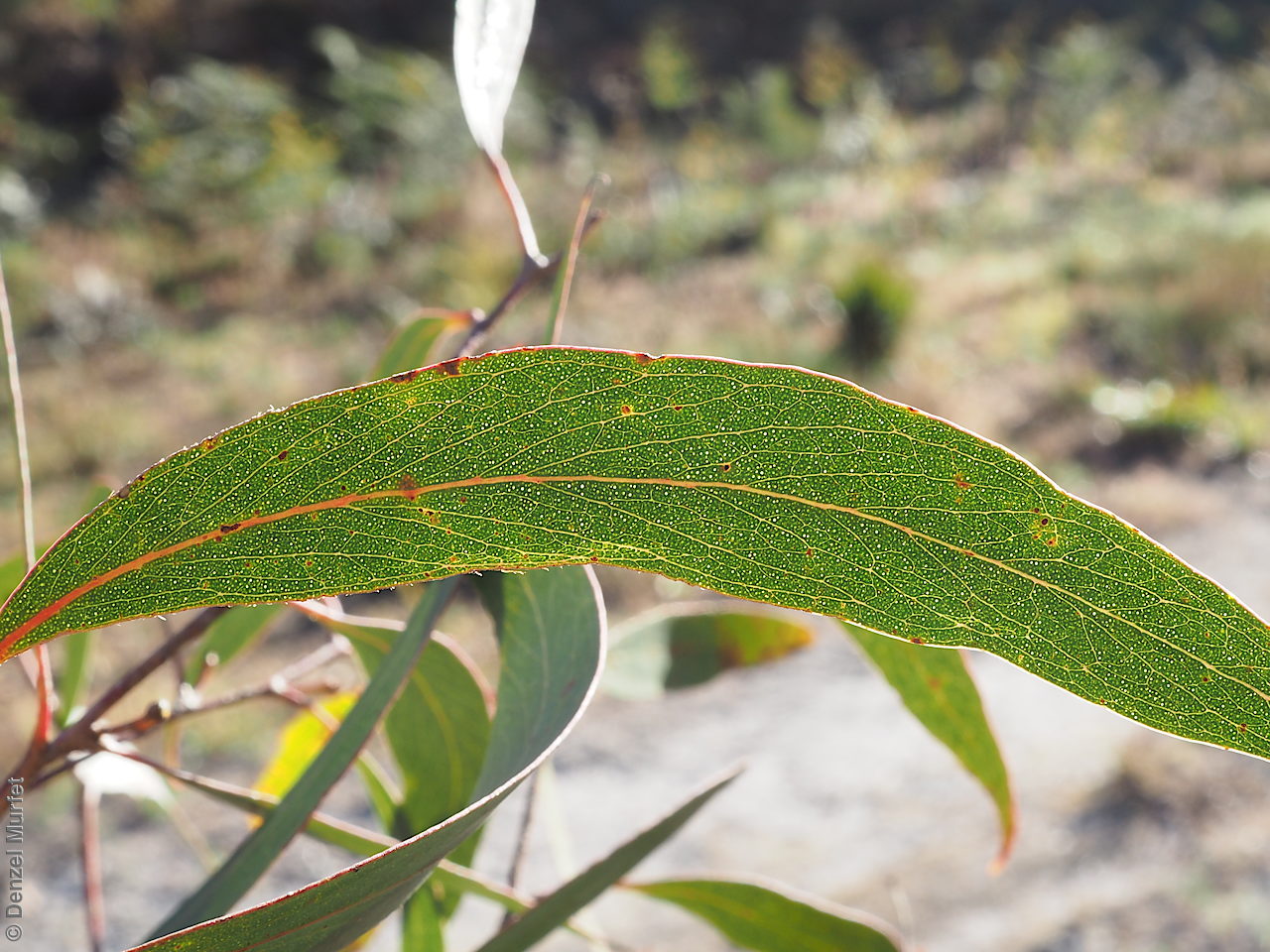
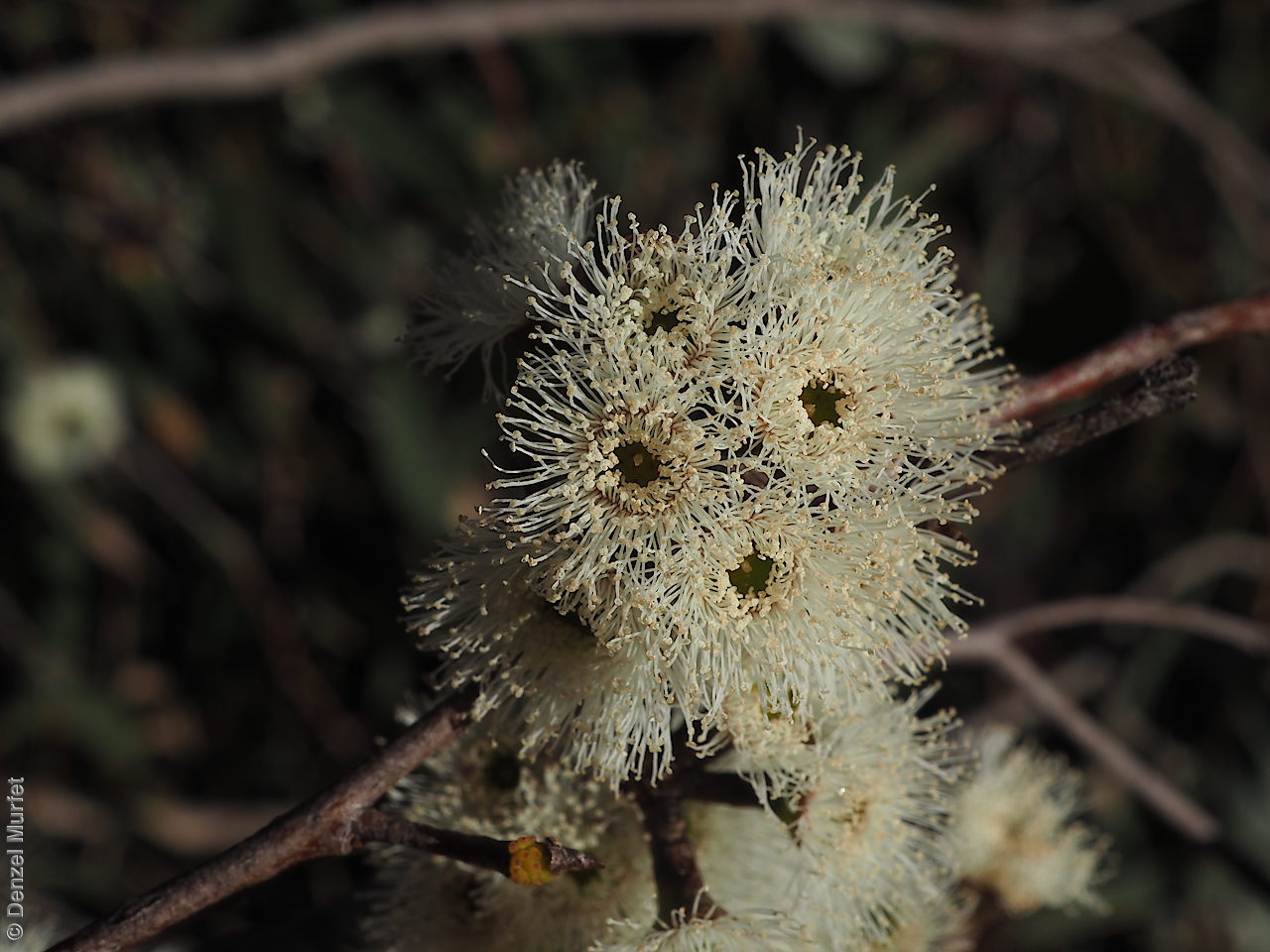
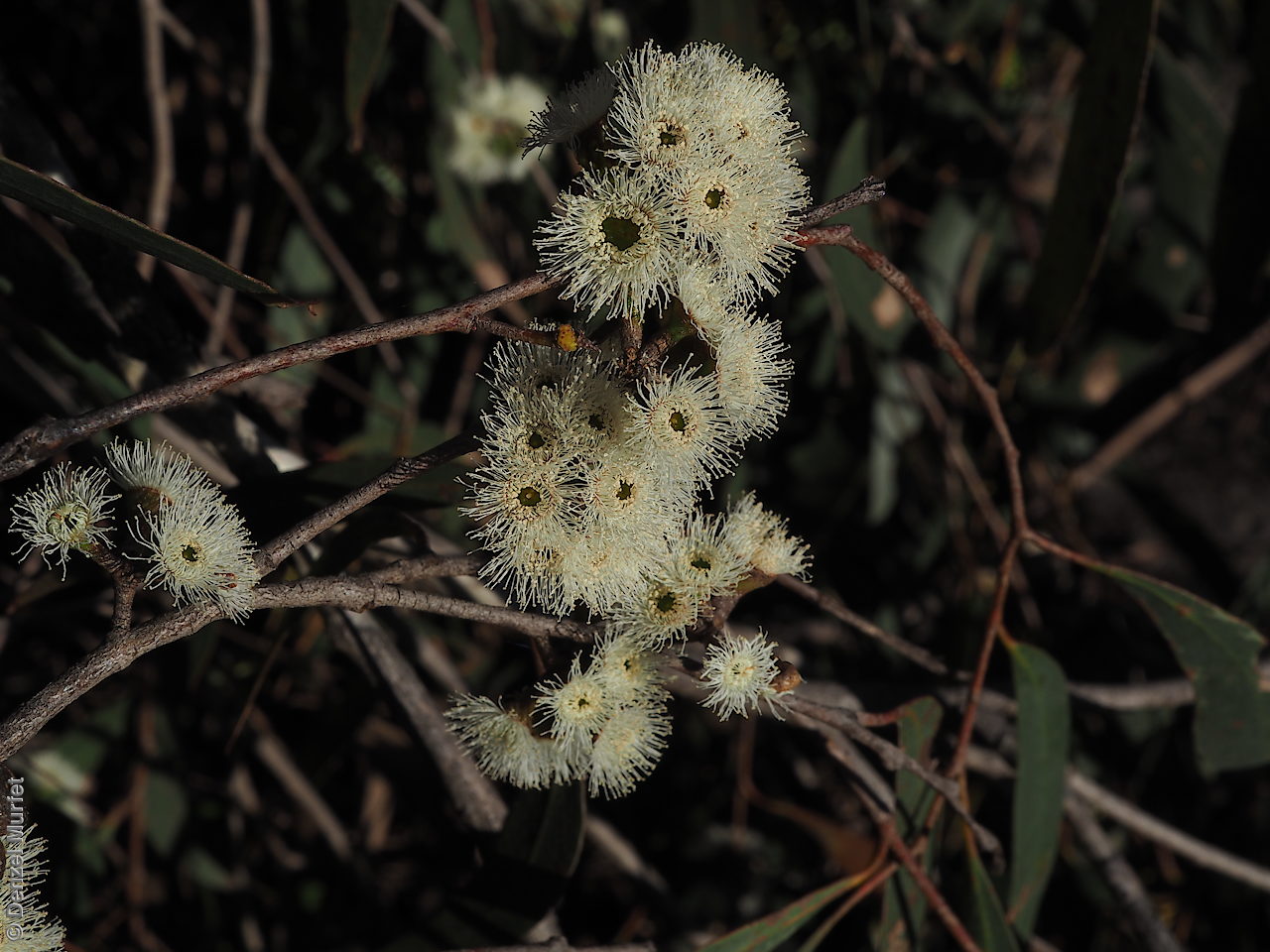
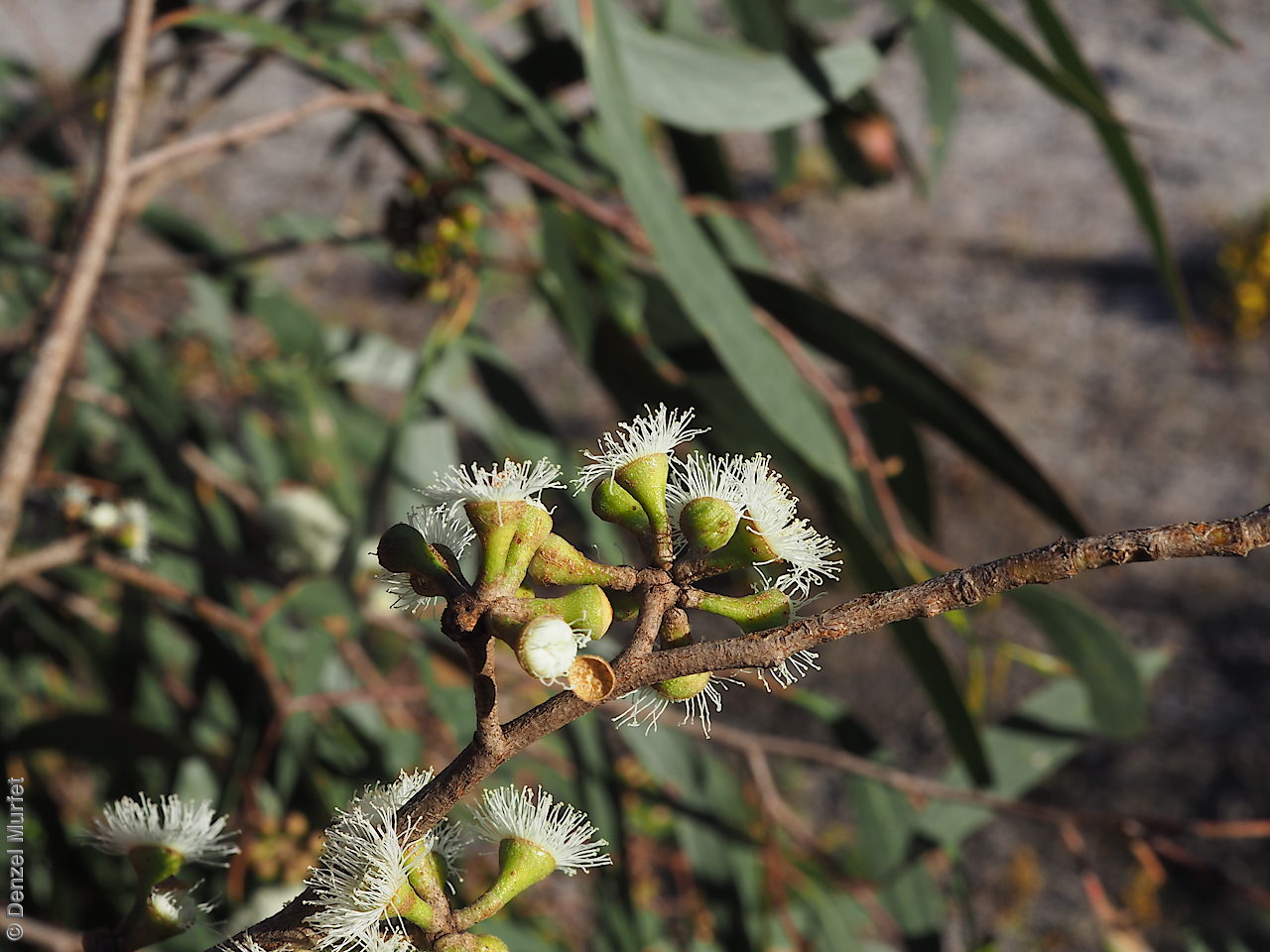

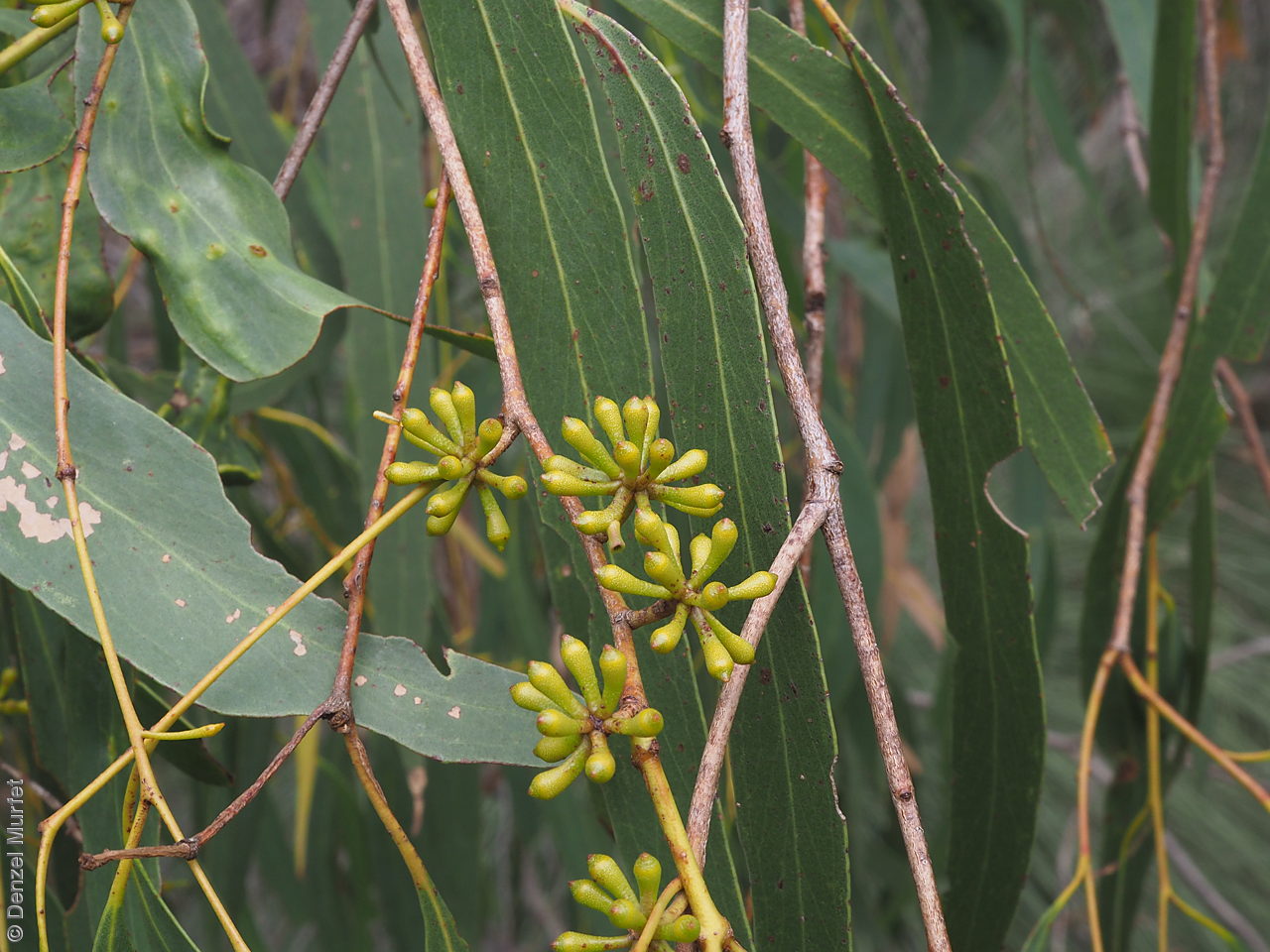
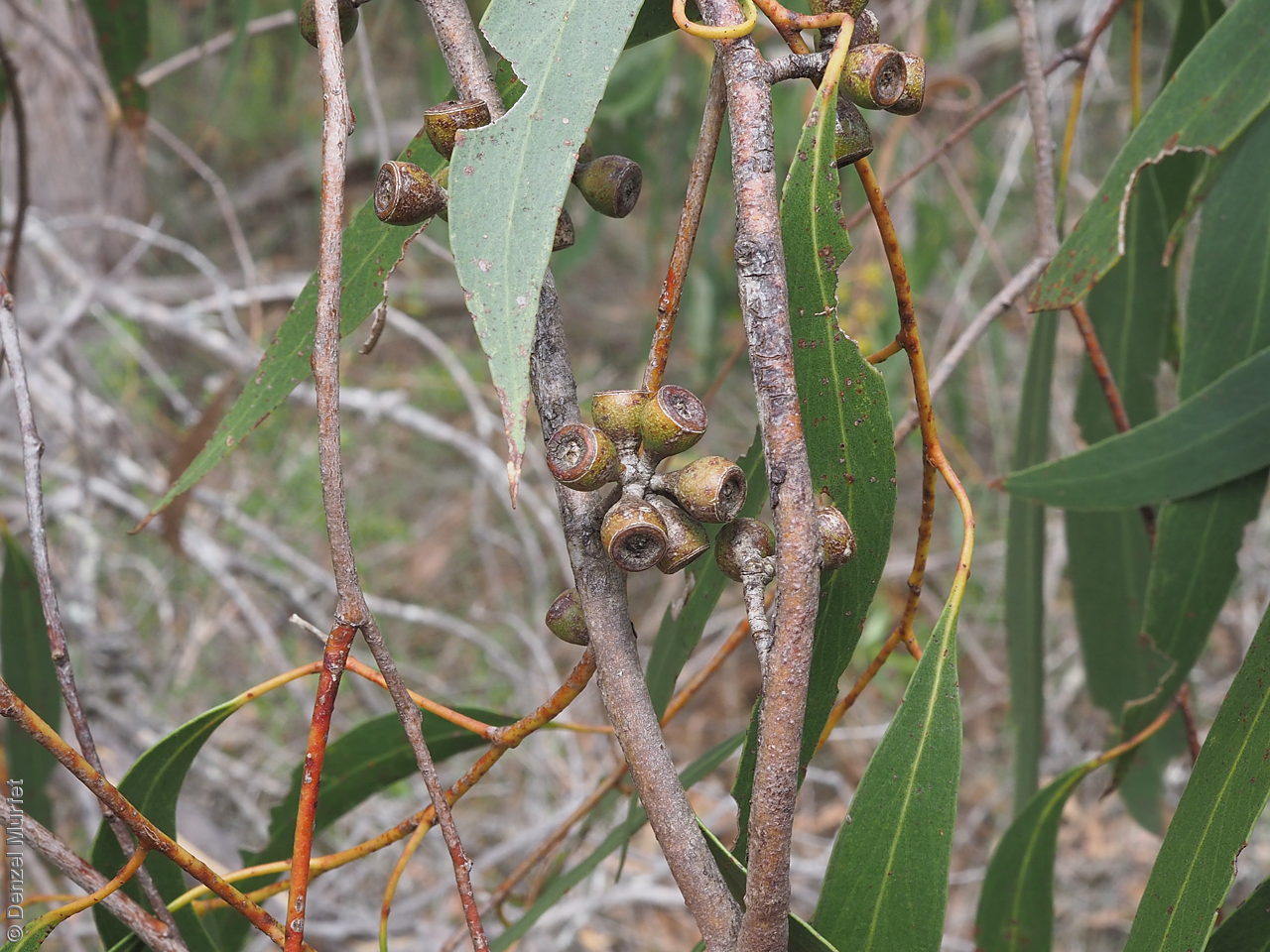
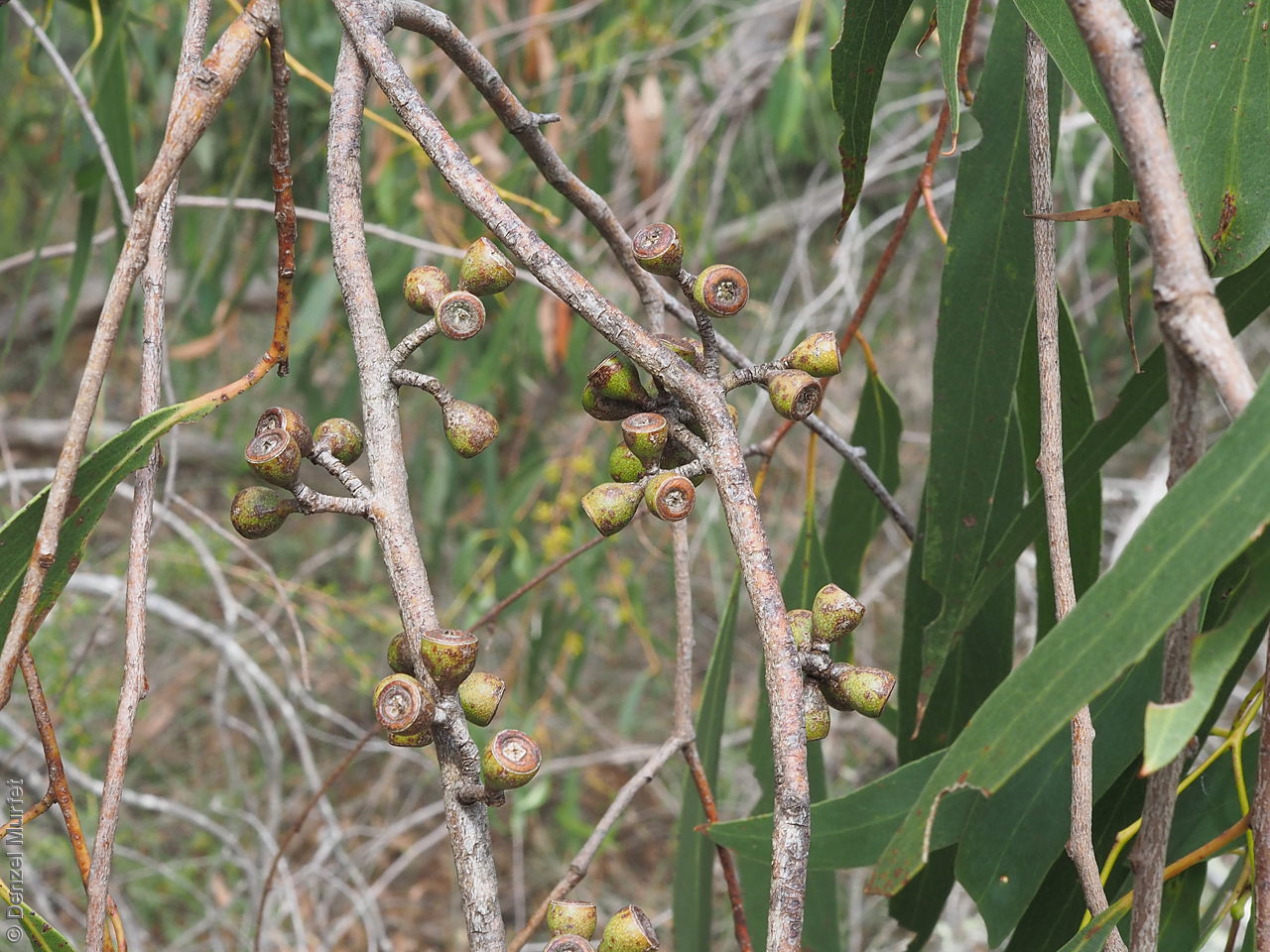
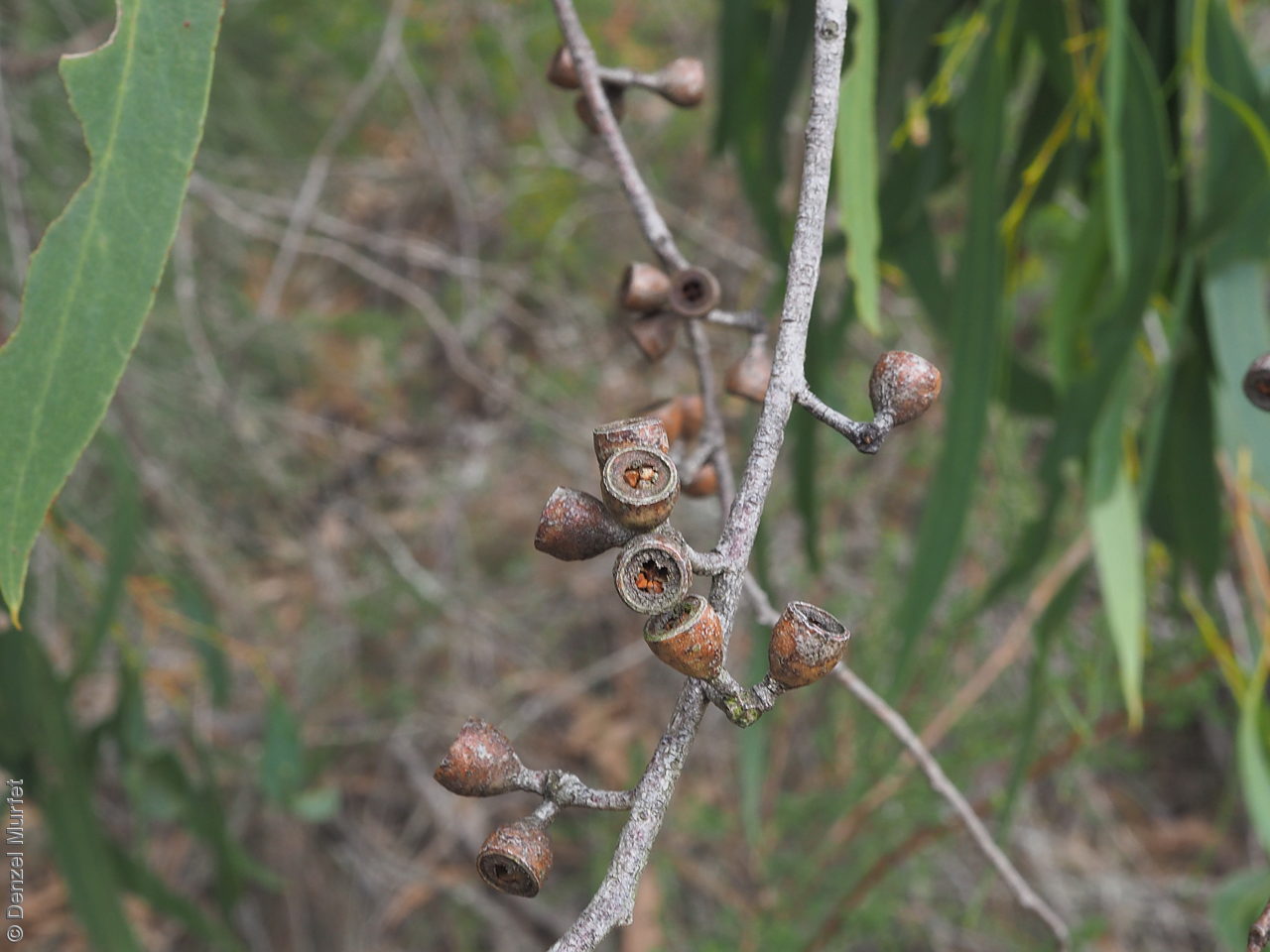
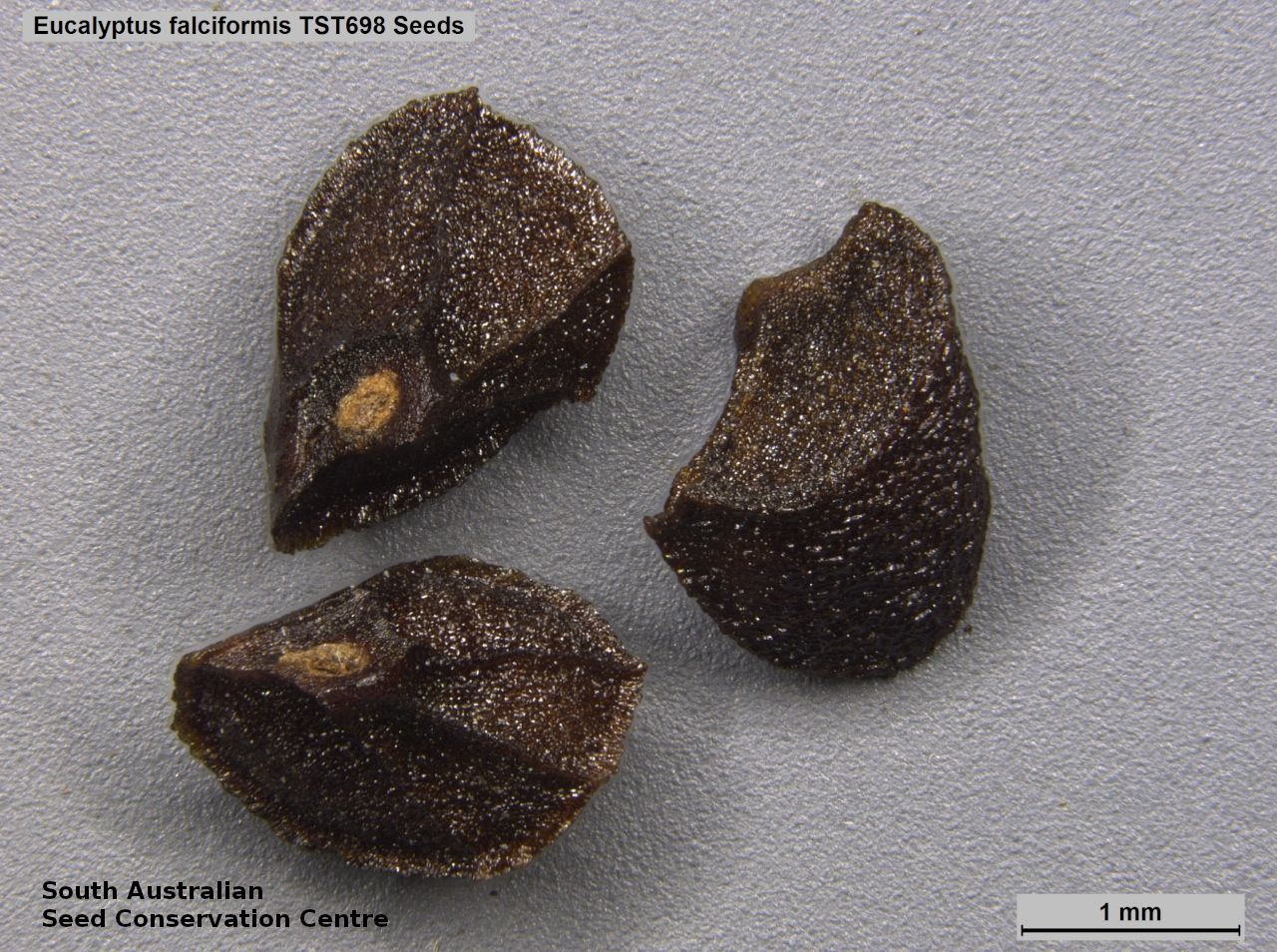





Botanical art
Prior names
Eucalyptus willisii ssp. falciformis
Eucalyptus nitida
Eucalyptus vitrea
Eucalyptus virgata, partly
Eucalyptus amygdalina, partly
Eucalyptus willisii ssp. willisii
Common names
Western Peppermint
Sickle-leaf Peppermint
Marsh Peppermint
Etymology
Eucalyptus from the Greek 'eu' meaning well and 'calyptos' meaning covered; alluding to the cap or lid which covers the stamens in the bud. Falciformis from the Laqtin 'falcis' meaning sickle and 'forma' meaning shape, referring to the its juvenile leaves which are sickle-shape or slightly curved.
Distribution and status
Found in the lower South-east in South Australia, growing on well drained sandy soils in wetter places in woodland and heath vegetation. Also found in Victoria. Native. Uncommon in South Australia. Common in Victoria.
Herbarium region: South Eastern
NRM region: South East
AVH map: SA distribution map (external link)
Plant description
Single or multi-stemmed tree to 14 m high with rough grey bark to the lower stems, smooth pale grey to yellow-cream bark above. Juvenile Fruits are woody cup-shaped to short cylindrical fruit to 9 mm long and 9 mm wide, disc slightly ascending, valves 3 or 4 at rim level. Seeds are dark brown to black pyramid-shaped seed to 2.5 mm long and 1.5 mm wide. Seed embryo type is folded.
Seed collection and propagation
Collect mature fruits that are dark and hard (difficult to break with a finger nail), with the valves un-open any time of year. Leave the fruits in a breathable container in a dry room for one to two weeks. This allows the valves on the fruit to open and release the seeds. Separate the seeds by placing all the materials into a bucket and shaking it to dislodge the seeds. Pass the material through a sieve to separate the unwanted material. The finer material will contain both seeds (soft) and frass (hard) usually distinguishable from each other but can be very similar in shape and colour. With finer sieves, the seeds can be separated from the frass but this is not essential for storage or propagation. Store the seeds with a desiccant such as dried silica beads or dry rice, in an air tight container in a cool and dry place. From one collection, the seed viability was high, at 90%. Seeds are non-dormant, viable seed should germinate readily.
| Location | No. of seeds (weight grams) | Number of plants | Date collected | Collection number Collection location | Date stored | % Viability | Storage temperature |
|---|---|---|---|---|---|---|---|
| BGA | 24,800 (37.45 g) | 20+ | 7-Jan-2009 | TST698 South Eastern | 20-Jul-2009 | 90% | -18°C |
Number of plants: This is the number of plants from which the seeds were collected.
Collection location: The Herbarium of South Australia's region name.
% Viability: Percentage of filled healthy seeds determined by a cut test or x-ray.